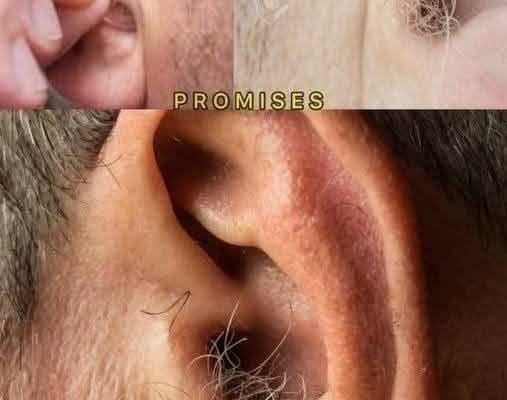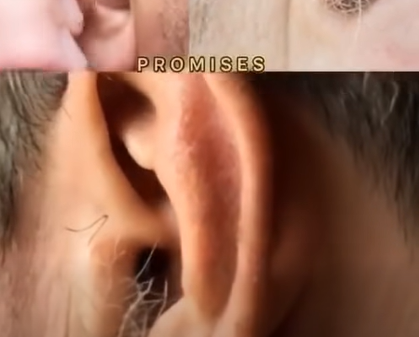Have you ever spotted tiny hairs growing in or around your ears and wondered why they appear?
It might not just be a matter of aging or genetics—some experts suggest ear hair could reveal subtler signals about your body. From hormonal shifts to rare conditions, even prenatal factors may play a role.
While often harmless, scientists are still investigating why some people develop noticeably more ear hair than others, leaving plenty of room for curiosity about what this little detail could signify.

Ear Hair Is Normal
Hair on the ears is completely natural, though the amount varies from person to person. Almost all of the human body is covered in hair, except for areas like the palms, soles, and lips. Ear hair, whether inside or outside, usually serves a protective function rather than indicating a health problem.
Why Do Ears Grow Hair?
Before birth, the body is covered with fine lanugo hair, including in the ear region. In some individuals, this hair may persist slightly after birth, especially in premature babies. As people age, particularly men, ear hair often becomes more pronounced due to testosterone, which thickens and coarsens it. Internal ear hairs work alongside earwax to trap dust and debris, shielding the eardrum. Deeper hairs in fluid-filled canals even help with balance by sensing movement and position.
Reasons for Extra External Ear Hair
The precise reason some people develop more external ear hair remains unclear. While older studies suggested a link to the Y chromosome, recent research questions that theory. Extremely long ear hair is uncommon, typically observed in men from certain regions such as India and Sri Lanka. In rare cases, infants born to mothers with diabetes may exhibit extra ear hair, though proper prenatal care can reduce this risk.
Other contributing factors may include:
Hypertrichosis: Excessive hair growth caused by genetics or acquired conditions
Certain medications
Hormonal or metabolic imbalances
Nutritional deficiencies
Abnormal growths in ovaries or adrenal glands
Skin infections or inflammatory conditions
Genetic hypertrichosis is often linked with other health issues, including developmental delays or physical abnormalities. Excessive hair inside the ear canal can also raise the risk of infections such as otitis externa, as trapped moisture and bacteria accumulate more easily.
Managing Ear Hair
Although generally harmless, many people choose to remove ear hair for cosmetic or comfort reasons. Options include:
Shaving: Quick and affordable, but may cause irritation and requires regular maintenance. Electric trimmers are safest for internal ear hair.
Plucking: Removes hair from the root for weeks at a time, though it can be painful.
Waxing: Longer-lasting (2–8 weeks), pulling hair from the root in one go.
Hair removal creams (depilatories): Only safe for external areas, with allergy checks recommended.
Laser hair removal: Offers permanent reduction by targeting follicles with heat, though multiple sessions and higher costs are involved.
Conclusion
Ear hair is a natural and often overlooked part of the human body, playing a protective and functional role. While most cases are harmless, excessive growth can sometimes signal hormonal changes, genetic conditions, or underlying health concerns. Whether you decide to leave it alone or remove it, understanding why ear hair appears sheds light on how even small features of our bodies can offer surprising insights into health, biology, and genetics.
Firefighter goes to respond to incident and discovers that one of the victims is his wife,

Portsmouth, VA — For firefighter Mark Reynolds, every emergency call is a challenge, testing his skill, focus, and resolve. But nothing could have prepared him for a personal surprise that would change his perspective on life and work.
It was a typical Thursday evening when the alarm sounded at Station 17. A multi-vehicle incident had been reported on the interstate. Reynolds, a 12-year veteran of the department, suited up promptly, unaware that this call would become one of the most memorable of his career.
The Unexpected Moment
As Engine 17 arrived at the scene, Reynolds and his team immediately went to work. They assessed the situation, coordinated traffic, and provided support to everyone involved. Cars had collided, and a few drivers were shaken but unharmed. The firefighters moved quickly, ensuring safety and stability.
Then, as Reynolds approached one of the vehicles to offer assistance, he noticed a familiar pendant swinging gently from the rearview mirror—a silver heart necklace he had given his wife, Lisa, for their anniversary.
“I remember pausing for a moment,” Reynolds later shared. “I couldn’t believe my eyes. I told myself, It can’t be her. But there it was, the necklace I had chosen with love.”
Reynolds’ heart swelled with concern, but also relief. He quickly ensured that everyone was safe, providing calm reassurance and guidance. The incident became a moment of reflection for him, highlighting the importance of loved ones and the fragile, unpredictable nature of life.
A Reminder of Gratitude
After the situation was stabilized, Reynolds called Lisa to make sure she was okay. She was shaken but safe. The experience left an impression not only on him, but on the entire department, emphasizing the balance between duty and family, and the unexpected ways life reminds us of what truly matters.
“It was a moment I’ll never forget,” Reynolds said. “It made me appreciate my family, my community, and the work we do every day. Life can surprise you, and sometimes it does in the most personal ways.”
